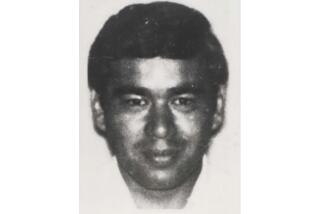Thanks to a lame leg, King Philip II’s body identified in ancient tomb
By examining dusty bones pulled from the bottom of an ancient tomb, researchers say they’ve identified the remains of King Philip II of Macedon, the father of Alexander the Great, in a tomb in Vergina, Greece, along with his wife and a child.
The discovery, described in the Proceedings of the National Academy of Sciences, corrects a decades-long case of mistaken identity.
“A nearly 40-y-old mystery concerning the Royal Tombs of Vergina has finally been solved that puzzled historians, archaeologists, and physical anthropologists,” the team of European researchers wrote.
Philip II was assassinated in 336 BC, and his young wife and newborn son were killed shortly thereafter, according to historical accounts, but it’s been unclear what happened to the king’s remains.
In 1977 and 1978, the skeletons of two men were excavated from the Royal Tombs II and I in Vergina. At the time, researchers said the Tomb II skeleton was probably that of Philip II, an idea that persisted even though this skeleton didn’t appear to match the description of Philip II in at least one very significant way.
Three years before his death, the king was famously wounded in the leg by a lance that left him lame, according to historical accounts.
“The current view is that Philip II was buried in Tomb II,” the study authors wrote. “However, the male skeleton of Tomb II bears no lesions to his legs that would indicate lameness.”
But after examining the skeleton from Tomb I, the researchers found that it had a very obvious case of “knee ankylosis,” a stiffness in the joint that is clear evidence of lameness. There is also a hole through the knee’s bone overgrowth, but no obvious signs of infection.
“This evidence indicates that the injury was likely caused by a severe penetrating wound to the knee, which resulted in an active inflammatory process that stopped years before death,” the authors said.
Based on bone and tooth analysis, the age of the Tomb I man at death appeared to be about 45, which would match with Philip II’s estimated age at death of 46 or 47.
Philip II’s wife Cleopatra (a.k.a. Cleopatra Eurydice) was thought to be in her late teens when she was killed, and the analysis of the young woman’s skeleton in Tomb I seems to match that description, with an age estimate of 18 years. The child’s age at death was estimated at 41 to 44 “intrauterine” weeks, which means it was probably a newborn.
“This evidence is against previous speculation that Cleopatra was executed a few months after Philip’s assassination,” the authors wrote. Mother and child were probably killed very shortly after the king’s untimely death, they wrote. (Olympias, the fourth wife of Philip II and the mother of Alexander the Great, is said to have killed them to secure her own son’s position as new ruler.)
So if Tomb I is the true final resting place of King Philip II and his young wife and child, then who is in Tomb II? Probably Philip II’s son King Arrhidaeus (a.k.a. Philip III Arrhidaeus) and his wife Eurydice, who never had a child, according to historical records. Arrhidaeus and Eurydice were also put to death by Olympias, but in 317 BC, two decades later. Tomb II may also contain some of the armor belonging to Philip II’s son and Arrhidaeus’s half-brother, Alexander the Great.
Having examined the damage linked to the wound that left Philip II lame, the scientists appeared impressed by the extent of his recovery.
“The recovery of Philip II after this terrible wound in the knee joint is a remarkable event in an era without antibiotics,” the authors wrote. “It demonstrates remarkable skill by his doctors to avoid bleeding.”
Love when science and history meet? Follow @aminawrite for more science news.







